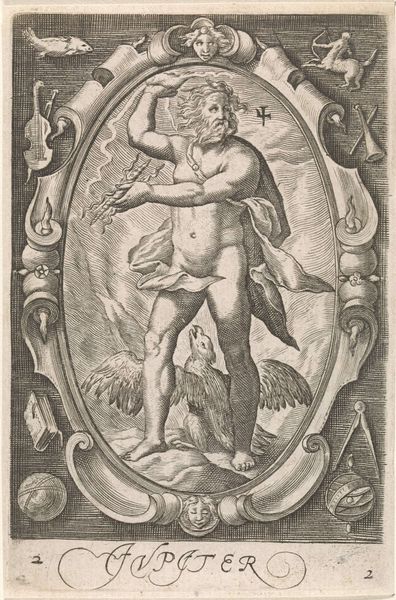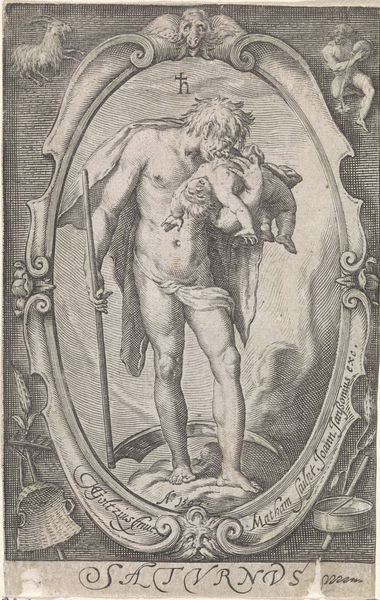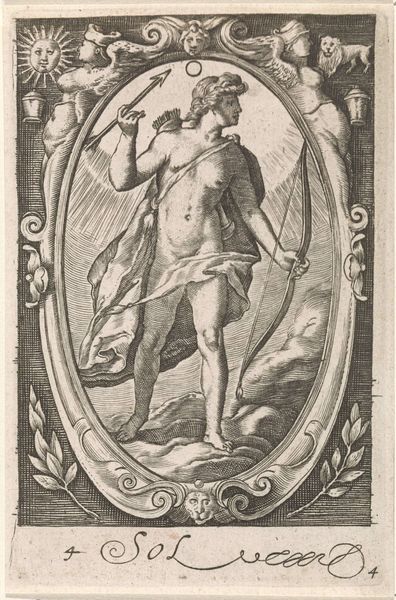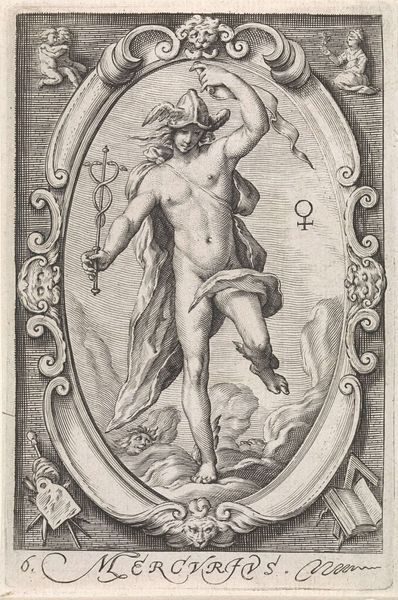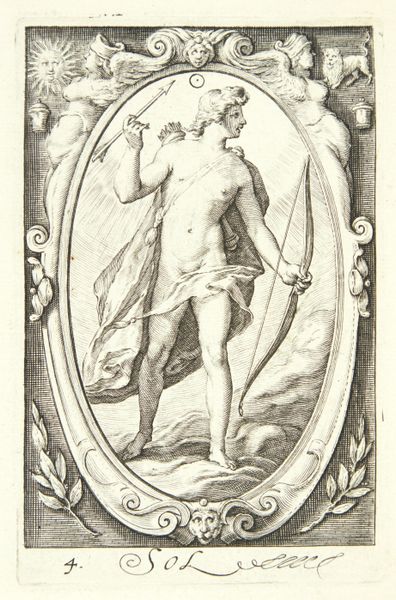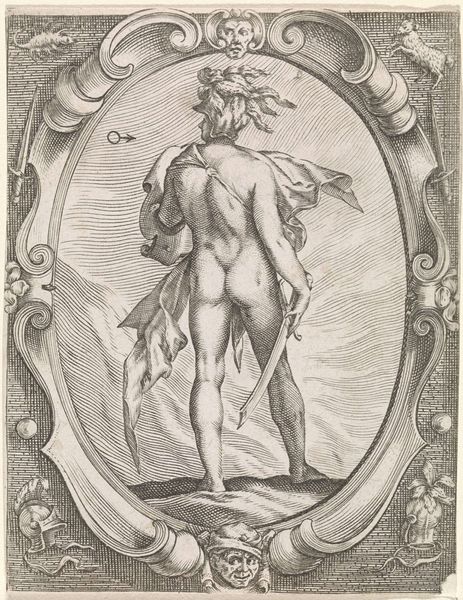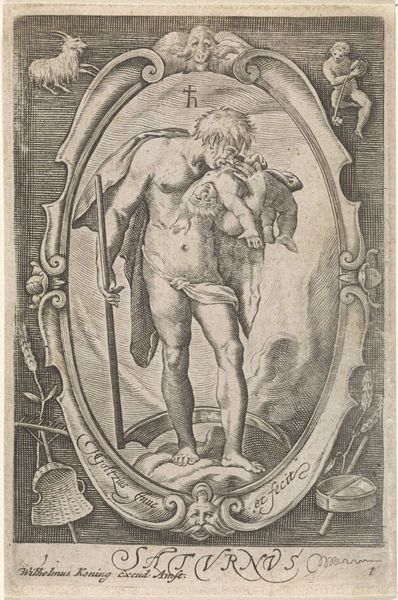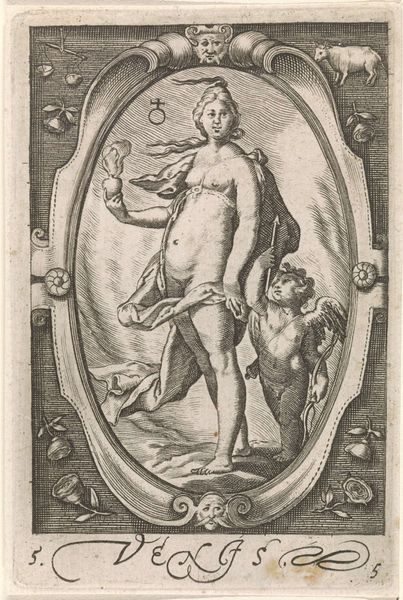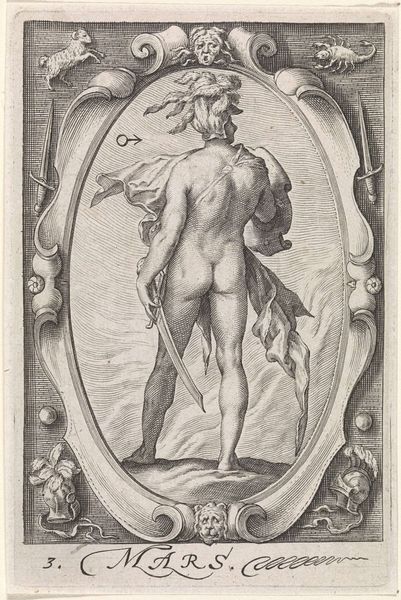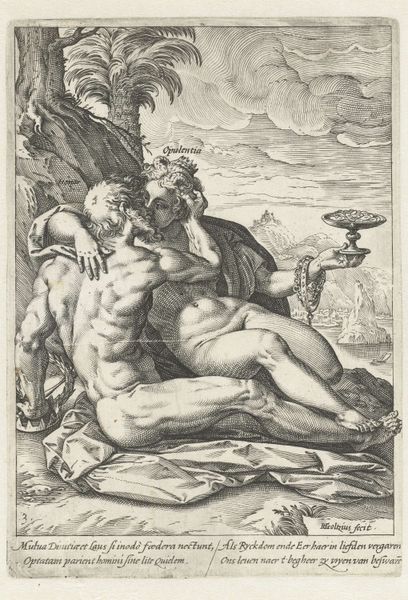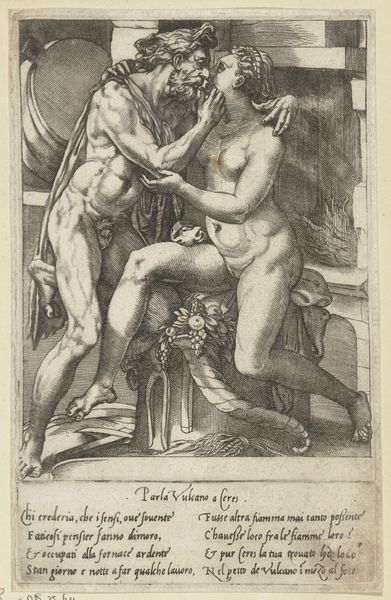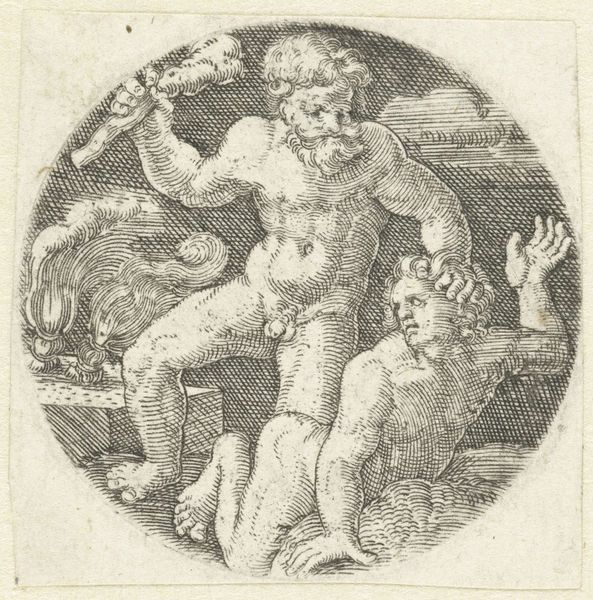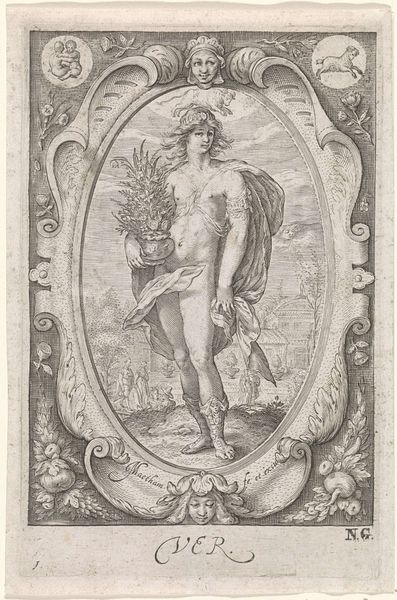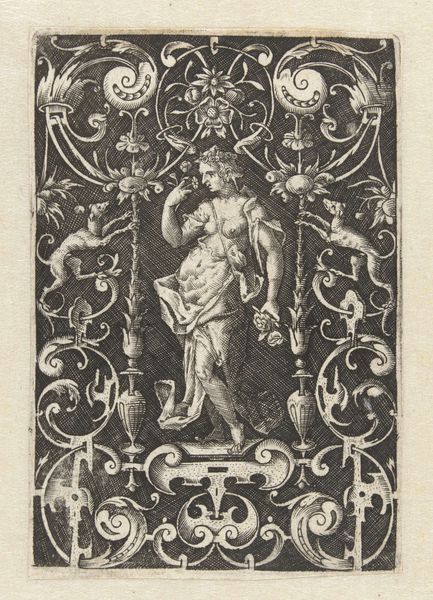
print, engraving
#
portrait
#
allegory
#
baroque
# print
#
old engraving style
#
classical-realism
#
portrait drawing
#
genre-painting
#
history-painting
#
engraving
Dimensions: height 118 mm, width 78 mm
Copyright: Rijks Museum: Open Domain
Curator: Let's turn our attention to Jacob Matham’s engraving, “Jupiter,” created in 1597. It's part of the Rijksmuseum's collection. What strikes you first? Editor: The sheer virtuosity of the line work. It’s an explosion of detail – look at the textures on the eagle's feathers, the wild hair of Jupiter. It all seems to pop from the page. It really is quite intricate! Curator: Absolutely! Consider that precision in relation to the symbolic language here. Jupiter, the king of the gods, naturally carries potent associations. He's positioned as a central patriarchal figure, and Matham reinforces that through both the subject's powerful physique and the surrounding iconography, like the eagle and the thunderbolts. The composition reinforces those classical allusions with references that build towards allegorical concepts around him, such as Justice. Editor: I'm curious about the printmaking process here. It looks like meticulously worked copper, I'd imagine the number of states and the time investment must be considerable. Does this choice of material suggest something about the intended audience or value ascribed to it at the time? Was it meant for circulation or high art collecting? Curator: A brilliant question! Prints were indeed more widely circulated than paintings, making them accessible to a broader audience. However, Matham's skill elevates this particular work. Its purpose lies not only in dissemination but in artistic demonstration, in solidifying and extending Matham's reputation. There's a dialogue happening here: between accessibility and refined execution. What’s so compelling here, ultimately, is the artist using engraving techniques and conventions to represent something almost unrepresentable, something divine. Editor: It does leave one contemplating the tangible labor, and the consumption on many levels, spiritual and artistic combined into a final form we see here. Curator: Exactly, Jacob Matham uses this physical labor of image making as a cultural translator, bridging classical myth to early modern society. Editor: It definitely leaves you with an elevated feeling after reflecting upon it.
Comments
No comments
Be the first to comment and join the conversation on the ultimate creative platform.
